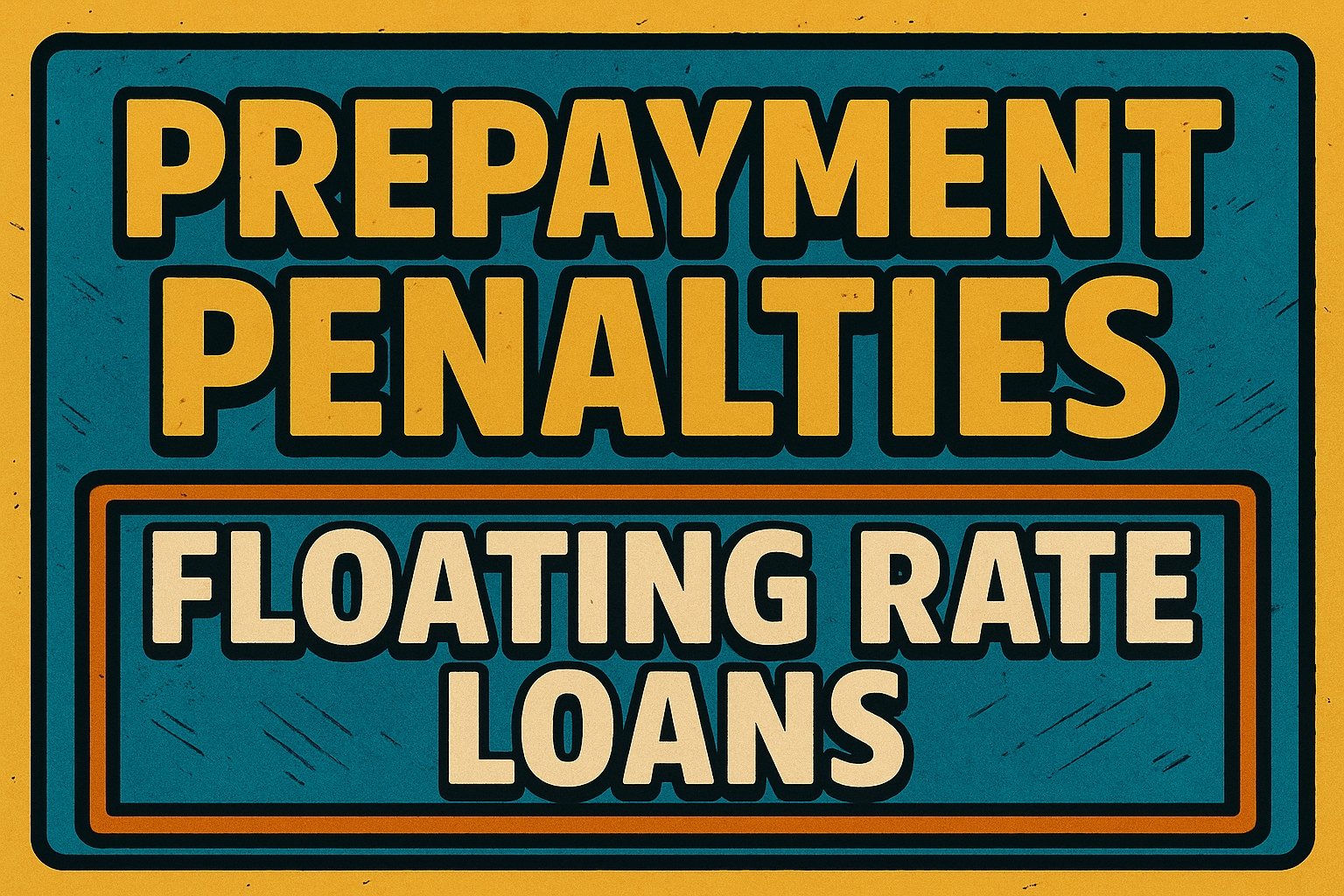Prepayment Penalties
( floating-rate commercial loans )

Prepayment Penalties in Floating-Rate Commercial Loans
…are generally less common in floating-rate commercial loans than in fixed-rate loans, but they can still apply, depending on the loan structure, lender, and risk profile. These penalties are designed to compensate lenders for potential earnings lost when borrowers repay loans early, though in floating-rate structures the lender’s exposure to interest rate risk is typically lower.
Why They’re Less Common
in Floating-Rate Loans
- Interest Rate Alignment: Floating-rate loans reset periodically (e.g., every 30, 60, or 90 days), aligning with market rates. Since the lender’s return adjusts with rate fluctuations, early repayment doesn’t significantly disrupt earnings compared to fixed-rate loans.
- Lender Flexibility: Banks and private lenders often use floating-rate loans for short-term financing needs (e.g., bridge loans or construction loans). To stay competitive, they may waive prepayment penalties or limit them to an initial “soft lockout” period of 6–12 months.
- Market Norms: In sectors like value-add real estate investing, prepayment flexibility is often crucial to borrowers. As a result, many floating-rate products are structured with little or no prepay cost after the lockout expires.
When Penalties Still Apply
Despite their relative rarity, some lenders still include prepayment penalties in floating-rate loans, particularly when:
- Lender has structured long-term capital commitments (e.g., life insurance companies or CMBS pools), and early repayment would leave them with uninvested funds.
- Private debt funds or bridge lenders depend on predictable income flows to meet investor returns, leading them to impose minimum interest periods or exit fees.
- Loans include hedging instruments like interest rate caps, where the lender incurs upfront costs and seeks to recover them.
Floating-rate loans may include the following terms:
- No Penalty After Lockout Period: After an initial period (often 6–12 months), borrowers can repay the loan without penalty.
- Minimum Interest Provision: The borrower may be required to pay a minimum of 6–12 months of interest, regardless of when the loan is repaid.
- Step-Down Fees: Some lenders charge a declining prepayment fee in the early years, such as:
- 1% in year 1
- 0.5% in year 2
- 0% thereafter
- Breakage Fees: If the lender has matched the loan with short-term funding or derivatives, breakage fees may apply to cover actual costs incurred by early termination.

Discussion & Best Practices
While floating-rate commercial loans are often more flexible, prepayment penalties are not entirely absent. They are typically lighter and shorter-term than those on fixed-rate loans, but can still affect a borrower’s exit strategy—especially with bridge lenders, CMBS, or institutional investors.
Always review the loan documents carefully for clauses related to:
- Soft or hard lockout periods
- Minimum interest or yield provisions
- Exit fees or administrative charges
Consulting with an experienced commercial mortgage broker or legal counsel before closing may
help ensure that your prepayment rights align with your investment timeline and risk tolerance.

